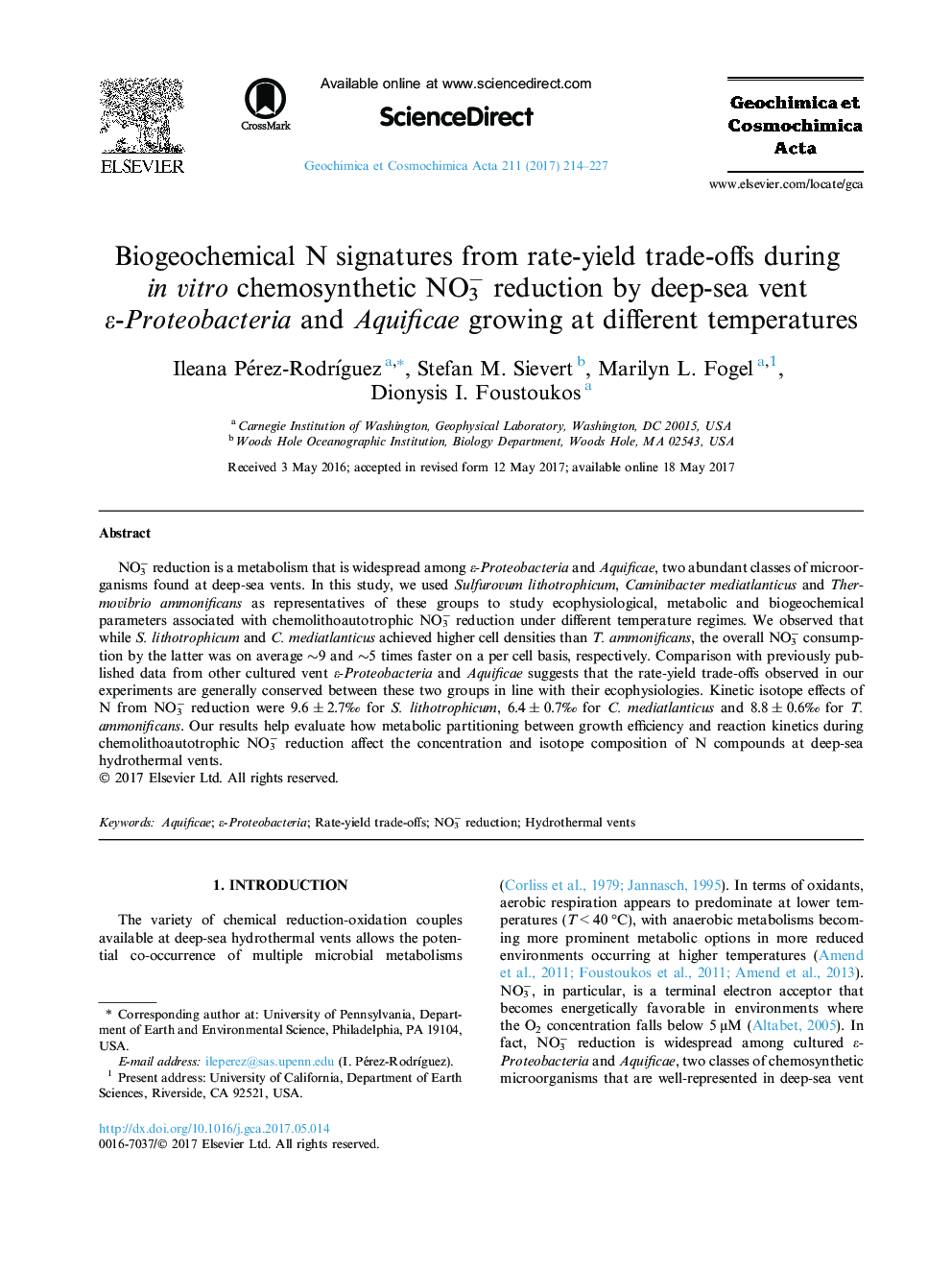| Article ID | Journal | Published Year | Pages | File Type |
|---|---|---|---|---|
| 5783395 | Geochimica et Cosmochimica Acta | 2017 | 14 Pages |
Abstract
NO3â reduction is a metabolism that is widespread among ε-Proteobacteria and Aquificae, two abundant classes of microorganisms found at deep-sea vents. In this study, we used Sulfurovum lithotrophicum, Caminibacter mediatlanticus and Thermovibrio ammonificans as representatives of these groups to study ecophysiological, metabolic and biogeochemical parameters associated with chemolithoautotrophic NO3â reduction under different temperature regimes. We observed that while S. lithotrophicum and C. mediatlanticus achieved higher cell densities than T. ammonificans, the overall NO3â consumption by the latter was on average â¼9 and â¼5 times faster on a per cell basis, respectively. Comparison with previously published data from other cultured vent ε-Proteobacteria and Aquificae suggests that the rate-yield trade-offs observed in our experiments are generally conserved between these two groups in line with their ecophysiologies. Kinetic isotope effects of N from NO3â reduction were 9.6 ± 2.7â° for S. lithotrophicum, 6.4 ± 0.7â° for C. mediatlanticus and 8.8 ± 0.6â° for T. ammonificans. Our results help evaluate how metabolic partitioning between growth efficiency and reaction kinetics during chemolithoautotrophic NO3â reduction affect the concentration and isotope composition of N compounds at deep-sea hydrothermal vents.
Keywords
Related Topics
Physical Sciences and Engineering
Earth and Planetary Sciences
Geochemistry and Petrology
Authors
Ileana Pérez-RodrÃguez, Stefan M. Sievert, Marilyn L. Fogel, Dionysis I. Foustoukos,
